When it comes to jewelry, nothing captures attention quite like a diamond necklace. Not even an exquisite engagement ring or a pair of dazzling earrings can rival its allure.
There’s something about the radiant sparkle of a diamond necklace that is simply irresistible. People naturally gravitate towards the diamond, even if it’s a small one with a simple round cut.
The necklace’s strategic placement is a key factor in its ability to captivate. While diamond rings and bracelets may go unnoticed initially, necklaces rest right beneath the face, demanding attention.
The diamond necklace’s inherent brilliance and the way it reflects light make it an ideal focal point that is guaranteed to catch anyone’s eye.
Although diamond earrings are also visible when engaging in conversation, they may not be as prominent as a diamond necklace. The diamond in the necklace directly faces the person you’re speaking to, making it nearly impossible for them to resist stealing a glance and admiring its beauty.
Given their alluring nature and breathtaking appeal, it’s only natural to ponder the ideal clarity for a diamond necklace.
In this article, we will delve into the intricacies of diamond clarity and explore how it enhances the beauty of a diamond necklace.
DESIGN YOUR OWN ENGAGEMENT RING: START WITH A SETTING OR START WITH A DIAMOND. IT’S REALLY UP TO YOU!
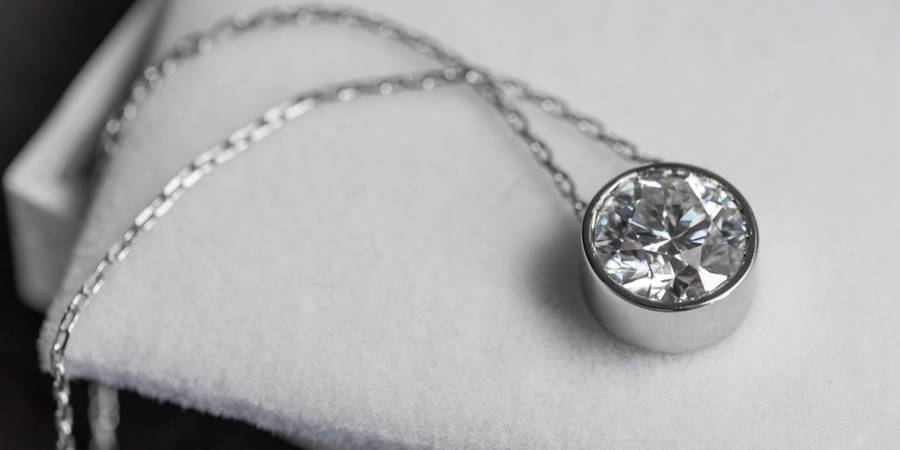
What Is Diamond Clarity?
Diamond clarity is a crucial characteristic that, along with cut, color, and carat, determines the value of a diamond. In essence, clarity is one of the 4Cs used to assess a diamond’s quality.
Clarity refers to the presence of internal inclusions within the diamond. The fewer inclusions there are, the higher the value of the stone. However, it’s important to note that no diamond possesses perfect clarity. Inclusions and blemishes are inherent to the diamond’s formation deep within the Earth’s crust.
When examining a diamond’s clarity, factors such as the number, size, nature, and relief of the inclusions must be considered. Additionally, the positioning of these inclusions greatly impacts the overall appearance of the diamond. Some inclusions may be less visible, while others may be more pronounced.
Diamond Clarity Chart
In movies, we often see couples seeking to determine the purity of their diamond and relying on a professional’s expertise. The portrayal often involves a condescending jeweler examining the diamond with a loupe, pointing out numerous imperfections that lead to a low-grade assessment, leaving the couple feeling disappointed.
However, in reality, jewelers do use loupes to examine diamonds, but the grading process is not as complex, and jewelers are generally not as unkind as depicted.
Diamonds are graded using a diamond clarity chart, which classifies diamonds into six categories. So, let’s explore these categories and their significance:
| FL | Flawless | Only the best of the best diamonds receive an FL grade. They’re extremely rare and expensive. |
| IF | Internally Flawless | The IF grade is reserved for almost perfect diamonds. They usually have some tiny blemishes that are enough to put them in the second place of clarity. |
| VVS1 – VVS2 | Very Very Slightly Included | This is the golden middle of clarity. Most people shopping for diamonds are aiming for a VVS grade. |
| VS1 – VS2 | Very Slightly Included | VS clarity is the next popular choice for jewelry. Diamonds with this grade have only a few more imperfections when compared to VVS diamonds. |
| SI1 – SI2 | Slightly Included | SI clarity diamonds have visible inclusions that greatly bring their price down. |
| I1 – I2 – I3 | Included | The I grade is the lowest grade a diamond can have. Such diamonds are heavily included, meaning only a small percentage of people buy them intentionally. |
It’s important not to place too much emphasis on diamond grades. Even a diamond with an “I” grade can possess incredible brilliance, elegance, and beauty. Furthermore, many individuals may not even notice the inclusions present in the diamond.
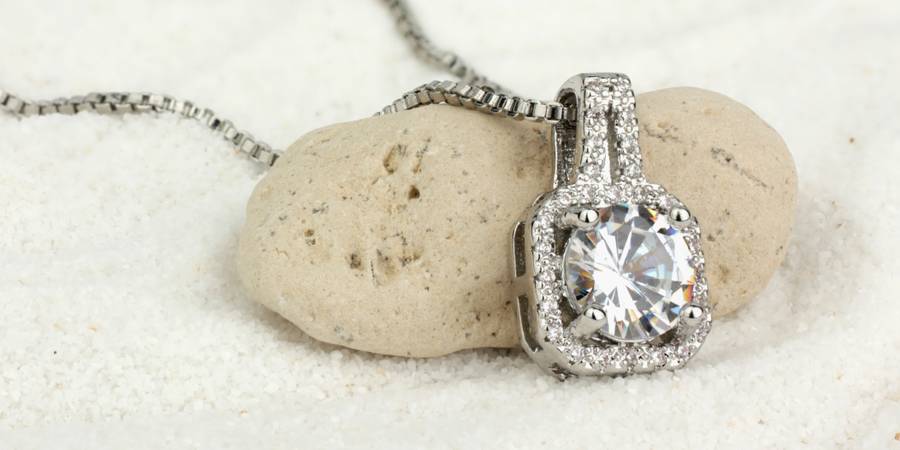
What Are The Different Types Of Inclusions In Diamonds?
There is a wide range of inclusions that can impact the clarity grade of a diamond. In this section, we will explore some of the most common types of inclusions found in diamonds.
- Pinpoints: Pinpoints are minuscule black or white inclusions that require magnification, such as a loupe, to be seen. They are not visible to the naked eye.
- Needle: Needle inclusions are elongated, white or transparent inclusions. These inclusions are tiny and challenging to detect.
- Cavity: A cavity is an opening on the surface of the diamond, resembling a tooth cavity. It can be visible to the naked eye and may pose an inconvenience. Cavities can easily accumulate dirt and oil, requiring regular cleaning. Polishing the diamond can address the issue, but it may result in a loss of carat weight.
- Chip: A chip inclusion is a surface opening on the diamond, similar to a cavity. However, chip inclusions are caused by wear and tear and are typically found along the diamond’s edges.
- Feather: Feather inclusions are small cracks within the diamond. They resemble feathers and can appear dark or transparent. In some cases, long feather inclusions reaching the diamond’s surface can compromise its durability.
- Bearding: Bearding inclusions resemble fine hair or fur. They are formed during the diamond shaping process and often appear as delicate lines.
- Graining: Graining inclusions manifest as distorted crystal growth within the diamond’s structure. They may appear as faint lines or creases.
- Crystal: A crystal inclusion is a small crystal that forms alongside the diamond and becomes trapped within it.
- Cloudy: While not a typical inclusion, cloudiness significantly affects a diamond’s brilliance and clarity. A diamond can have a VVS grade but lack shine due to internal haziness or foggy appearance.
Is Diamond Clarity Important For Necklace?
Contrary to popular belief, not everyone will notice the inclusions in a diamond necklace, even if it has an SI grade. With a well-cut diamond, it is possible to purchase an affordable SI-grade diamond that sparkles just as brilliantly as an IF-grade diamond.
Many jewelers primarily promote high-quality diamonds due to their higher price points, leading to misconceptions about the importance of clarity. The truth is, you don’t have to spend a fortune to acquire a diamond necklace that dazzles.
However, if you have future plans of reselling the diamond necklace, a higher clarity grade is generally preferable. It is also advisable to obtain a GIA certificate for the diamond, as it helps maintain its value to the fullest extent possible.
Are Inclusions Visible To The Naked Eye?
In I-graded diamonds, larger inclusions are often noticeable without the need for magnification. On the other hand, in higher clarity grades, the inclusions are typically barely visible or can only be observed with the aid of a magnifying glass.
When making a purchase, it is advisable to choose a diamond that appears “eye-clean.” This means that the diamond is free from noticeable inclusions when viewed with the naked eye. By selecting an eye-clean diamond, you can enjoy a stunning, elegant, and brilliantly sparkling diamond necklace, with any inclusions being visible only to professionals using a loupe.
Diamond Clarity Enhancement
Certain treatments can be applied to diamonds to minimize the appearance of inclusions by disguising or filling them. These treatments include techniques like laser drilling, deep boiling, and fracture filling.
While these treatments can significantly enhance the clarity of a diamond, it is important to note that they may compromise the stone’s durability. Additionally, it’s worth mentioning that clarity-enhanced diamonds are not eligible for GIA certification.
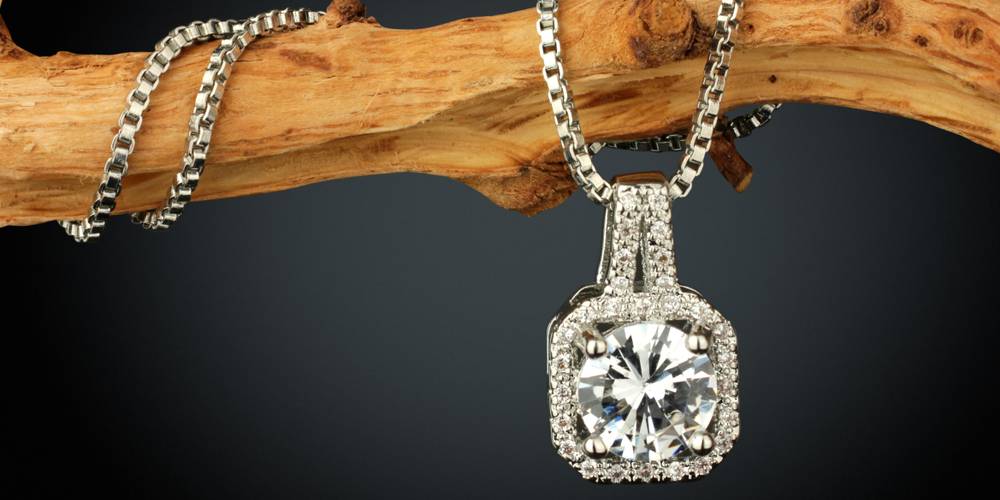
Should I Buy Diamond With The Highest Clarity Grade For My Necklace?
Certainly! It is not necessary to buy the highest-grade diamond for your necklace. Any colorless diamond will sparkle beautifully when it catches the light.
Inclusions in a diamond are not as significant as you may think. Typically, only professionals will notice them. While you may know that your diamond is a VS grade, others may assume it is an IF grade.
Therefore, when purchasing a diamond necklace, it is advisable not to prioritize clarity. Instead, focus on the other three Cs (carat weight, color, and cut), consider the desired length of the necklace, and choose the appropriate metal for the chain.
Can Inclusions be Concealed?
Absolutely!
Inclusions in diamonds can be effectively concealed by selecting the right setting. Sometimes, inclusions are unintentionally hidden and may go unnoticed by the jeweler’s eye.
However, such cases are rare. Usually, people choose a necklace setting that effectively covers up the imperfections of their diamond.
Here are some common ways inclusions are concealed:
Placed under a prong
Hidden by the mounting or setting
Positioned beneath a facet
Located at the bottom of the diamond, making them invisible from the front view
Inclusions that are tiny, transparent, and not listed on the diamond certificate
If you wish to save money, consider opting for a lower clarity grade and choose a cut and setting that effectively masks most of the diamond’s imperfections. You’ll be amazed at how well inclusions can be concealed with just the right prong placement.
Best Cut for a Diamond Necklace
If you desire an FL-grade diamond, any cut you choose will showcase its exceptional clarity. However, if you truly want to highlight the clarity of your diamond, an Asscher cut can be a perfect choice.
The Asscher cut is renowned for revealing all the flaws of a diamond. So, if your diamond is flawless, showcasing it through an Asscher cut is a wonderful way to exhibit its exceptional clarity. Baguette and Emerald cuts are also fantastic choices for higher clarity grade diamonds.
On the other hand, when it comes to lower clarity grades, the cut should be selected carefully to effectively conceal the inclusions. Some popular cuts that are known for hiding inclusions are:
- Round
- Cushion
- Oval
- Heart
- Radiant
- Marquise
- Princess
If the cut does not entirely hide all the inclusions, there is no need to worry. Your diamond will still possess the brilliant sparkle that is characteristic of all diamonds.
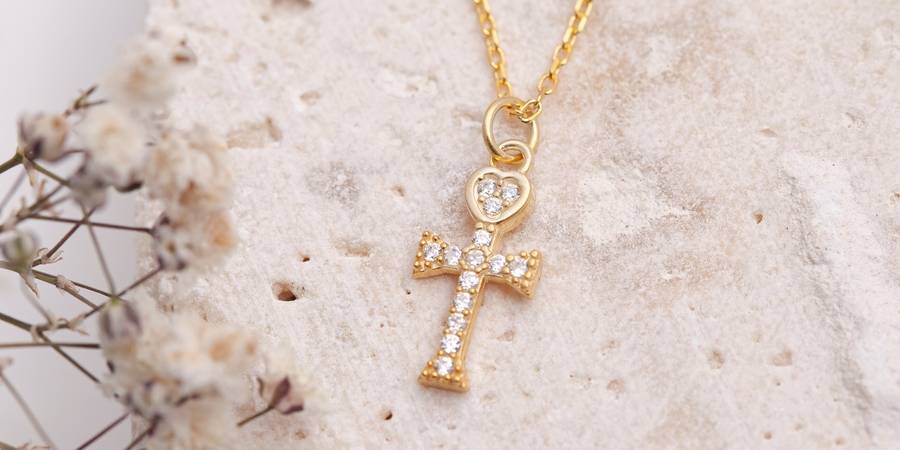
How To Save Money While Buying Diamond Necklace
If you’re looking to make a fantastic purchase while saving money, here are some tips to consider:
Choose a Lower Clarity Grade
There is a significant price difference between different clarity grades, but the variation in actual inclusions may be minimal. Higher clarity grades are often heavily marketed and sought after. However, the difference between a VVS1 and an SI1 diamond can be so subtle that it may go unnoticed. Only a trained professional with the aid of a magnifying glass can truly discern the distinctions within the diamond. Take your time in making a decision and prioritize selecting the desired setting and cut for your diamond necklace. Then, evaluate how much budget remains for the clarity grade. Remember, regardless of the grade, a diamond will still sparkle beautifully when illuminated.
Consider Online Retailers
Online retailers have gained immense popularity in recent years, and for good reason. Prices are often significantly lower compared to physical stores. While you may miss out on the in-store experience, you can save up to 50% by purchasing a diamond online. Most online shops provide customer support, and some even offer various payment methods. Additionally, certain online retailers allow you to propose your own design for the diamond necklace, adding a personalized touch to your purchase.
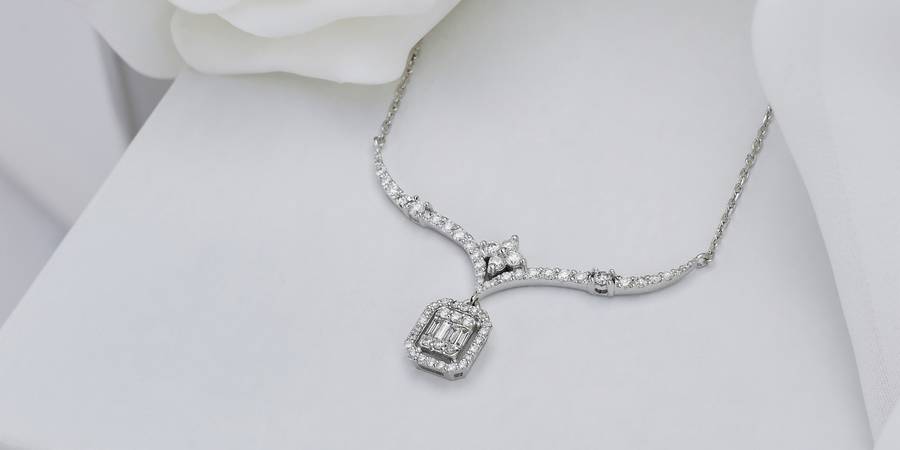
Conclusion
The impact of inclusions is not as pronounced as one might anticipate. In fact, most inclusions are minuscule, and the variation in clarity grades is quite subtle. Therefore, there is no need to excessively fixate on the clarity grade when selecting a diamond necklace.
By carefully selecting the appropriate setting and cut for your diamond necklace, you can effectively conceal any noticeable inclusions that might be visible to the naked eye. There is no necessity to break the bank for a flawless (FL) clarity grade diamond. Instead, consider opting for a slightly lower grade, such as SI or VSI, as it provides excellent value for the money invested.
We trust that this article has addressed your question regarding the ideal clarity for a diamond necklace and has instilled greater confidence in your future diamond necklace purchase.


